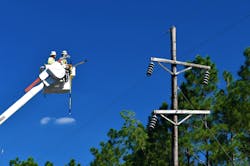Electric utilities across the United States and the world share much in common, but the truth is these diverse businesses have distinct “personalities” and approach their challenges and opportunities in many unique ways.
All utilities are facing challenges, in one way or another, to maintain grid resiliency and provide affordable rates while the grid gets cleaner and serves an increasingly complex web of intermittent supply and demand requests. However, some utilities want a high level of visibility into and control of their customers’ distributed energy resources, such as rooftop solar systems, while others don’t.
Some utilities draft road maps to address the major challenges they face to operating a resilient, renewable grid. Before starting on this kind of plan, it is helpful for utilities to take a “personality test.” Answering these three basic questions can help them determine their best path to meet the grid challenges of today and tomorrow.
1. What is your utility’s philosophy toward managing customer-owned assets located behind the meter?
If controlling behind-the-meter assets isn’t a priority for a utility, it eliminates the use of some grid modernization strategies and technologies as sensible options.
2. What is the depth of your utility’s relationship with its residential, industrial, and commercial customers?
A utility with a strong presence “inside customer homes” via programs like demand response can pursue strategies and technologies that leverage behind-the-meter assets for the holistic benefit of the entire grid.
3. What are the current conditions on the utility’s grid?
A utility operating a grid that faces a widespread increase of rooftop solar systems, battery storage and electric vehicles (EVs) should take a different approach than a utility challenged more by localized grid strain, such as from a new housing development with high solar and EV penetration.
Does your utility’s personality shout DERMS?
The Myers-Briggs Type Indicator test has taught many executives the meaning of being an ENTP or ISFJ. However, depending on the results of the utility’s personality test, utility executives might find themselves now contemplating the letters D-E-R-M-S.
A distributed energy resource management system, or DERMS, can help utilities navigate challenges and create a road map to a fully renewable, multidirectional, resilient grid. But they’re not necessarily for every utility — at least not yet.
Referring back to the three “personality test” questions, a utility that prioritizes data collection from and control of customer-owned, behind-the-meter energy resources can tap a DERMS for systemwide planning and optimization. Of course, this works best for utilities that have a strong presence inside customer homes and a grid with a multiplicity of customer-owned energy resources.
The true, primary use for a DERMS is to act as a distributed layer of control. Artificial intelligence-based decision making allows a DERMS to use historical data combined with forecasts to plan ahead, pivot when needed based on emerging new data and automatically optimize grid operations. It coordinates the tsunami of requests to maximize production and minimize curtailments from intermittent systems.
An ideal scenario for DERMS as a distributed layer of control occurs when:
- There is high adoption of distributed solar across a service territory.
- An area is aggressively pursuing EV adoption.
- The utility has strong customer engagement programs as well as the desire and capability to manage customer resources.
- The utility seeks to limit power shutoffs or solar energy curtailment.
Horizon Power was facing such a scenario in Western Australia, where it wanted to enable a high number of customer-owned energy resources and engage customers through new programs that would give the utility a level of control over those resources. In the remote coastal community of Onslow, Horizon had reached its maximum hosting capacity for customer solar photovoltaics (PV) and the grid was experiencing challenges posed by the intermittency of solar PV, which can wreak havoc on the network and its equipment.
In 2018, Horizon Power installed a PXiSE DERMS solution to balance and coordinate all of the community’s distributed energy resources. The DERMS tripled distributed solar hosting capacity and is helping scale back use of legacy fossil fuel generators.
Utilities interested in learning if their personality is a match for DERMS as a grid modernization solution can read more in PXiSE’s latest white paper, “DERMS: Yes or No for Your Utility?”
Becky Wheeler is head of marketing at PXiSE.







